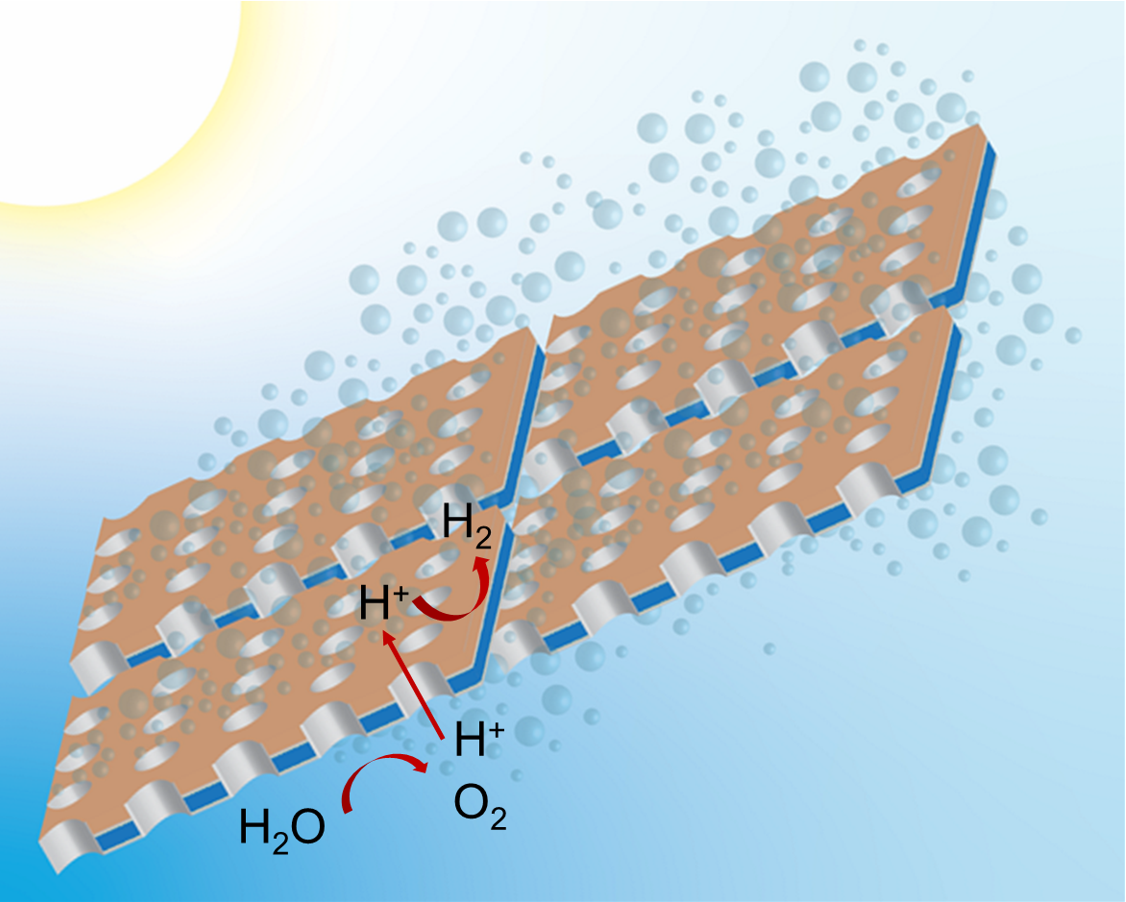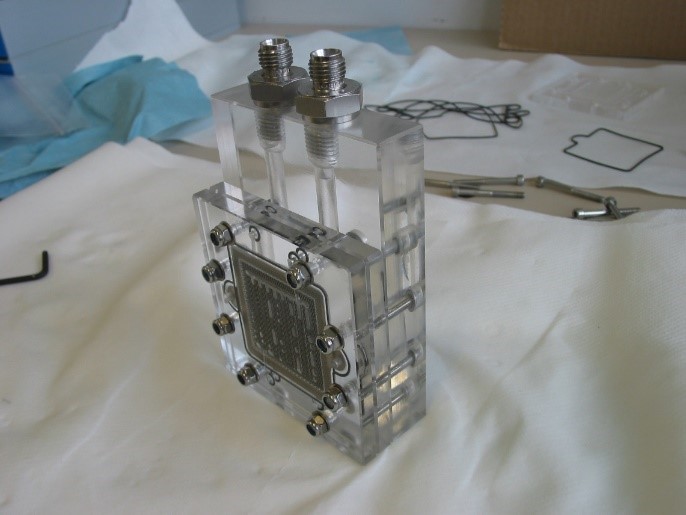H2Demo – Green Hydrogen Produced by Direct Solar Water Splitting
Hydrogen is a storable energy carrier, which makes it an essential component in a fossil-free sustainable energy system. Hydrogen technologies not only serve as a link between the transformations in the energy and mobility sectors but also are important for intelligent energy management and hold a key position in industry’s transition toward a sustainable value chain. The major challenge lies in the sustainable, and thus environmentally friendly, hydrogen production in large quantities. Solar energy plays a central role here. In the joint project "H2Demo", funded by the German Federal Ministry of Education and Research (BMBF) and led by the Fraunhofer Institute for Solar Energy Systems ISE, eleven partners are working on demonstrators for direct solar water splitting.


Water electrolysis is the process of using electricity to split water molecules into oxygen and hydrogen. Green hydrogen is produced using renewable electricity. Up to now, solar or wind power have been used to drive the chemical reaction in a water electrolyzer. The method for direct solar hydrogen production via photoelectrochemical processes goes one step further. It involves the absorption of sunlight in a semiconductor material that itself generates a photovoltage (> 1.6 volts) that is large enough to decompose water directly into hydrogen and oxygen. Analogous to tandem solar cells used in high efficiency photovoltaics, “tandem absorbers” in which two absorbing materials are electrically connected in series are used for this photoelectrochemical process. Producing hydrogen in this way has already been demonstrated on the small scale. The aim of the H2-Demo research project is to produce larger demonstrators for the first time.
"The work packages in H2-Demo project include the optimization of the III-V tandem absorbers, which are deposited on silicon and whose properties need to be further improved and optimized for the specific application," says project coordinator Dr. Frank Dimroth, department head of III-V Photovoltaics and Concentrator Technology at Fraunhofer ISE. "In addition, processes and equipment will be scaled up for later industrial use and new processes with high throughput will be developed," he adds. Finally, a demonstrator with an area of 36x36 cm2 will be constructed and installed on a test field and the solar hydrogen efficiency, hydrogen generation and module efficiency will be measured in detail under operation.
The project partners in H2Demo consist of the following companies and research institutions: Fraunhofer ISE (project head), AZUR SPACE, Helmholtz Zentrum Berlin, HQ Dielectrics, LayTec AG, Philipps University of Marburg, Plasmetrex GmbH, SEMPA, Ilmenau University of Technology, University of Munich and the Universiy of Ulm.
The "H2Demo" project is being funded with 14 million euros over a period of five years and is one of several winners of the "Hydrogen Republic of Germany" (Wasserstoff Republik Deutschland) competition organized by the German Federal Ministry of Education and Research (BMBF) in the area of basic research. The projects complement the three industry-led hydrogen lead projects, which are also scheduled to start this spring.
Last modified: